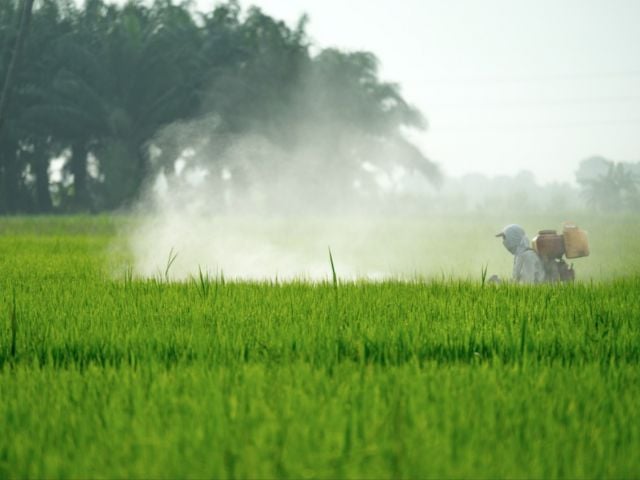
On a busy weeknight, takeout and fast food are easy dinner time solutions. But your family’s favorite on-the-go meal may come with a side of toxic fluorinated chemicals.
Per- and polyfluoralkyl substances, or PFAS, are a family of greaseproof, waterproof and nonstick industrial compounds. They’re used in hundreds of consumer products, including ones that touch your food. These chemicals pollute the bodies of almost everyone worldwide, and have been linked to a slew of serious health problems.
Some of the most worrisome places these chemicals lurk are in fast food wrappers and takeout containers. Food and Drug Administration tests found that PFAS chemicals can migrate out of food wrappers to contaminate food, especially when the food is greasy. And when EWG and colleagues tested fast food wrappers, we found fluorinated chemicals in 40 percent of the wrappers tested. This included packaging for sandwiches, pizza, fried chicken and pastries.
Until companies change their packaging, or laws are put in place to keep our food safe from this nasty class of chemicals, PFAS in fast food packages is one more reason to cut back on fast food and greasy carryout whenever possible. Avoiding these substances may be even more important if you are pregnant or have kids, as PFAS chemicals can be particularly harmful to a developing fetus or young child.
Babies and young children are exposed to these chemicals in more ways than adults. They can ingest PFAS chemicals by drinking breast milk, crawling on dusty floors, and putting their hands in their mouths after touching contaminated materials. Because of their small size, children may have higher exposures by body weight than adults.
Toxic fluorinated chemicals can lower a baby’s birth weight when the mother is exposed. Women drinking water contaminated with the PFAS chemical PFOA in West Virginia and Ohio had increased risk of pregnancy-induced hypertension and pre-eclampsia. PFAS chemicals at concentrations common in Americans may reduce the effectiveness of vaccines in children.
Adding to the long list of concerns, exposure to PFAS chemicals may increase the risk of liver damage, cancer and thyroid disease, and cause endocrine disruption.
Stricter regulations would effectively reduce Americans’ exposures to these harmful chemicals, but there is no federal law to restrict their use in consumer goods. In the absence of federal action, state and local legislators are beginning to ban PFAS chemicals from food packaging.
- In March, Washington Gov. Jay Inslee signed the first state law to ban toxic fluorinated chemicals from food packaging.
- An ordinance proposed in San Francisco would ban PFAS chemicals from single-use foodware like containers, cups and utensils. It would also require foodware designated compostable to be certified by the Biodegradable Products Institute.
- The California legislature is considering legislation that requires manufacturers of food packaging and cookware to label their products with a warning if the products contain PFAS.
Over the past decade, studies have brought to light just how widespread these chemicals are. Besides takeout containers and fast food wrappers, PFAS chemicals are also in microwave popcorn bags, drinking water, cosmetics and clothing.
Read EWG’s tips on how to reduce exposure to these chemicals.
It’s time for Americans to demand that their elected officials and regulators across the U.S. stand up to the chemical and packaging industries, and get PFAS chemicals out of food packaging.



